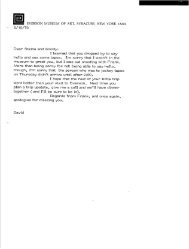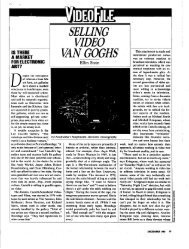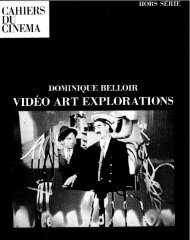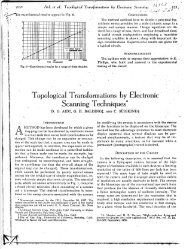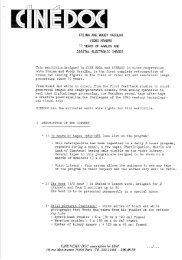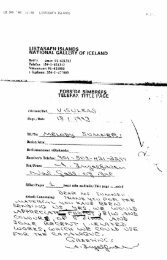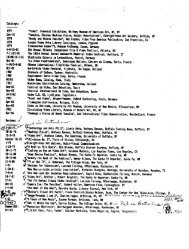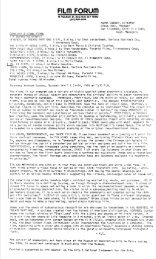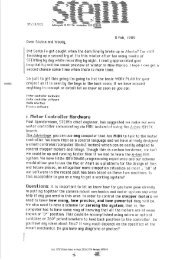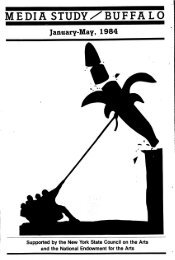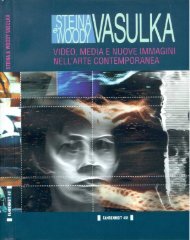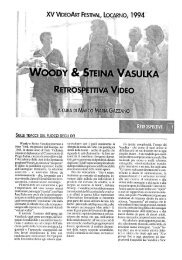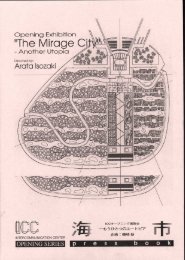Chapter 4: A HISTORY OF COMPUTER ANIMATION ... - Vasulka.org
Chapter 4: A HISTORY OF COMPUTER ANIMATION ... - Vasulka.org
Chapter 4: A HISTORY OF COMPUTER ANIMATION ... - Vasulka.org
Create successful ePaper yourself
Turn your PDF publications into a flip-book with our unique Google optimized e-Paper software.
<strong>Chapter</strong> 4 : A <strong>HISTORY</strong> <strong>OF</strong> <strong>COMPUTER</strong> <strong>ANIMATION</strong> 3/20/92 42<br />
functionality ; the functionality must not only be defined and<br />
perfected, it must be integrated into the language as well . The<br />
advantages lie in standardization of how you put things together,<br />
and, especially when the language is implemented graphically, in<br />
performing graphical operations graphically .<br />
Animation Stand and Optical Printer Control Languages<br />
Another vector of development were languages to control<br />
animation stands and optical printers . The syntax of these<br />
languages tended to be more defined in the terms of the machinery<br />
involved (eg, counters and fields), and not as virtual images . After<br />
all, the artwork is in the real world, and the cameras are physical<br />
equipment . In LANGUAGENAME, developed by Cinetron, typical<br />
commands include table pan and tilt, camera zoom, shutter, and<br />
frame advance (aka shuttle)(figure) . Computation is employed to<br />
calculate eases, simplify skip and repeat framing, and alert the user<br />
to problems such as potential temporal aliasing . Temporal control<br />
is provided by simple interactive commands . In practice the<br />
translation of the graphical layout notation used for optical printers<br />
to computer text is more straightforward than that of dopesheet<br />
animation because the computerized stand camera operator must<br />
still mount the background and cels artwork on the stand, often<br />
changing it on a frame by frame basis .<br />
Obviously low level command language also exists for<br />
manipulating camera and rigs moving in three dimensional space,<br />
however in practice it is semantically equivalent to manipulating<br />
virtual 3D cameras and props . Whether it uses mathematical-like<br />
notation or studioese depends more upon the pleasure of its users<br />
that the physical equipment .<br />
Concept of simulation<br />
Graphics processes may be implemented in hardware or<br />
software-in the last analysis this distinction is secondary to<br />
identifying the functionality itself, that is, the definition of the<br />
variable and its domain . Making animation is a procedural task that<br />
can be described with a series of steps . Animation involves<br />
manipulating both the data of the image (by drawing or by procedure<br />
2D or 3D environments) as well as temporal variables such as<br />
velocities, accelerations, and directions . So thinking about the<br />
functional parameters of animation makes a great deal of sense . It<br />
is how one directs animation, talks with an animator, and how an<br />
animator operates the system .



